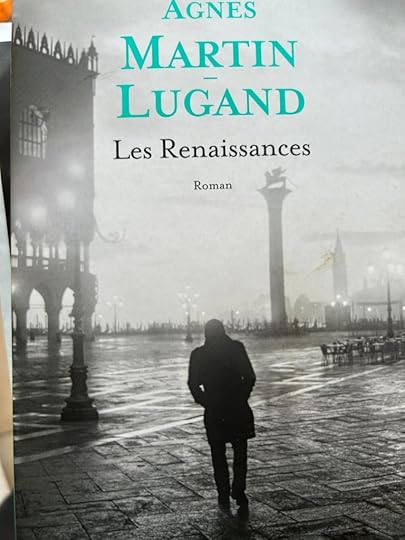Les Renaissances

Where does a writer get his or her inspiration from? That is the subject that animates this book by Agnes Martin Lugand, where a chance encounter in a Paris bistro sets a writer suffering from writer’s block off on the trail of a storyline, which she pursues with unwavering (and inconsiderate) persistence. I read this book in the original French, but its content could be applied with equal persuasiveness in any culture and language.
The heroine of the book, Rebecca, is struggling to fight depression and her inability to produce another novel, and probably there is a logical connection between the two. In addition, she is feeling unhappy in her marriage to Estaban, who is originally from Spain, but she finds consolation in her relations with her twin teenage children, Oscar and Finane. The various chapters of the book are written from the standpoint of different characters at different times, giving the reader insights into the mental processes of each of them.
And so, in order to escape the pressures of family life, one eveing Rebecca goes to a bistro near her Paris home. There she encounters Milo, a restorer of antique furniture, who in turn is seeking to escape from the pressure of the nearby presence of the woman he once loved and lost. They meet and he tells her his story over the meal they share at the bar.
After returning home, Rebecca finds that her creative juices have begun to flow once more, and she sits down and writes a chapter of a new novel. After a sleepless night she decides that she has an idea for a full-length book, but her sense of honesty or something else impels her to get into her car and go haring off through France to the Provence region in the south where Lino has his studio and home in a charming old farmstead.
When Rebecca puts her project before Lino he is at first totally opposed to the idea, but is gradually won round, and this sets off a series of meetings between the two in which Lino gives an account of his life, love and labours pursued by his demons and the shadow of his lost love. The story has many twists and turns, bringing the reader face to face with the life of bohemian artists in the south of France, Italy (especially Venice) and Paris. As we (and Rebecca) hear and read Lino’s account of the vicissitudes of his life the relations between writer and subject turn into some kind of doomed love affair, and everything seems predestined to end in tears.
The book concludes with a cloud of hypotheses and assumptions, leaving the reader to decide for him or her self how things really ended. Why the term ‘Renaissances’ was chosen as the title of the book is not entirely clear either, leaving the reader at liberty to choose how to interpret it. We are told that Rebecca’s novel is a resounding success, and even enables her to avenge to some extent the past injustices inflicted on Lino. But whether the reader is convinced that any or all of the events described in the novel are convincing, feasible or even acceptable remains an open question.



